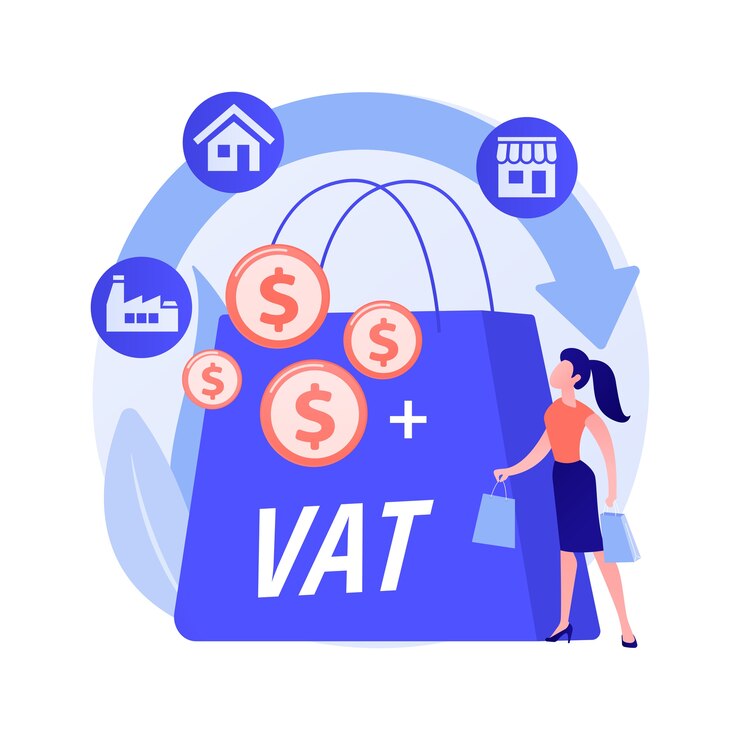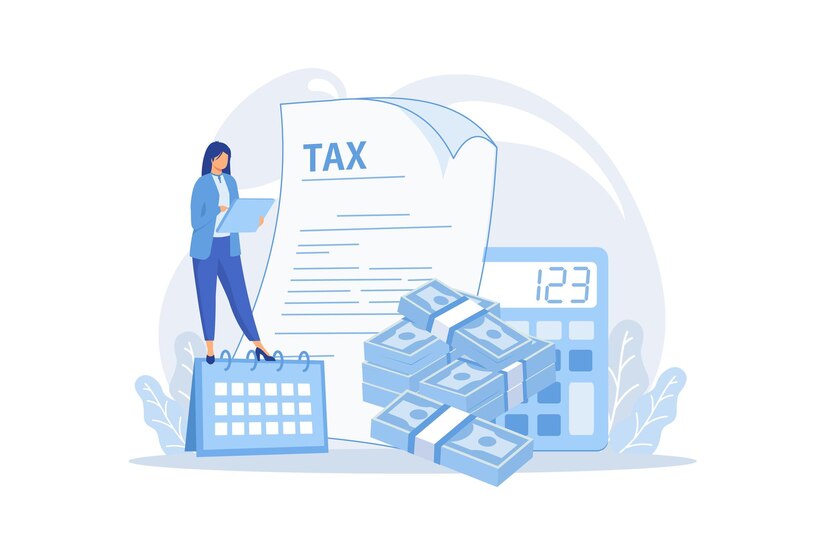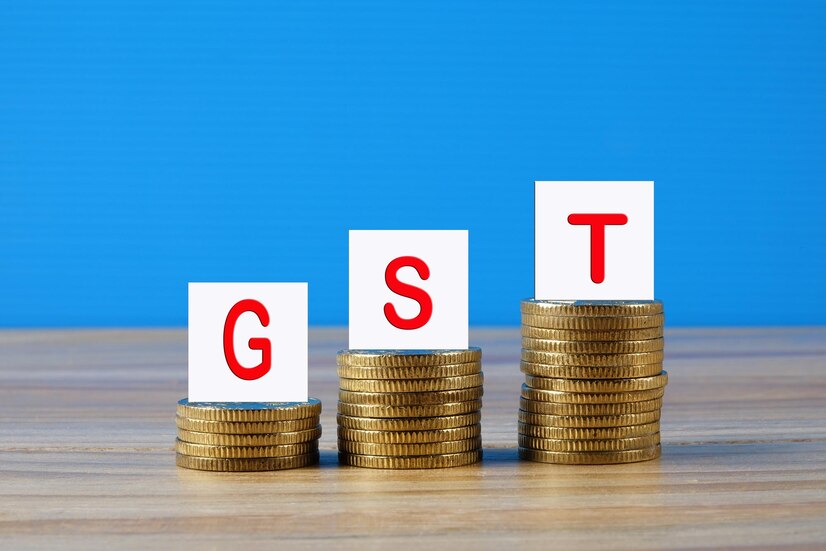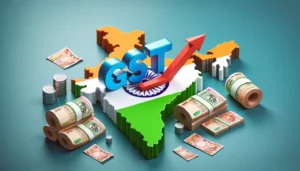Difference between pre GST and post GST
- 18 Aug 24
- 16 mins

Difference between pre GST and post GST
Key Takeaway
- GST unified multiple taxes into one system, reducing the cascading effect and simplifying compliance.
- The GST Council plays a pivotal role in setting and adjusting tax slabs, impacting all sectors of the economy.
- E-Way Bills under GST enhance transparency and efficiency in inter-state supply of goods.
- The GST Portal streamlines tax filing and compliance, offering a centralized platform for businesses and taxpayers.
- GST has created a more equitable tax structure by standardizing rates and removing interstate trade barriers.
Understanding the Cascading Effect of Taxes
The cascading effect of taxes, often referred to as "tax on tax," was a significant issue in the pre-GST tax system. This occurred when a product was taxed at every point of sale from production to purchasing by the consumer, without any set-off benefits for the taxes paid at previous stages. As a result, the end consumer bore the burden of this compounded tax, leading to higher prices. This effect was mainly due to the structure of the earlier tax system where various taxes such as VAT, excise duty, and sales tax were levied separately by the state and the central governments, each without recognizing the tax inputs from the other.
Comparing Former Tax Structures with GST

Before the implementation of GST, India's tax regime was fragmented, with multiple indirect taxes imposed by both state and central governments. Each tax type—such as VAT, excise, service tax, and others—had its own rates and rules, which led to a complex tax environment. This not only made compliance cumbersome for businesses but also resulted in inefficiencies due to the lack of seamless tax credit across different types of taxes and state borders.
In contrast, GST brought about a unified tax system that subsumed most of these indirect taxes into a single tax framework, reducing complexity and making it easier for businesses to comply. GST is levied at each point of sale in the supply chain, with a comprehensive set-off available for the input taxes paid. This shift not only eliminated the cascading effect but also improved the overall economic efficiency by ensuring that the tax costs are not embedded in the selling prices.
Reasons for the Introduction of GST
The introduction of GST (Goods and Services Tax) was primarily aimed at addressing the inefficiencies of the previous fragmented tax system that was riddled with the cascading effect of taxes, multiple compliance requirements, and a lack of transparency. The previous system, with its multitude of taxes like VAT, service tax, excise, and others, created significant economic distortions, increased costs due to tax-on-tax, and hindered the seamless movement of goods across state borders. GST was envisioned to create a single national market, improve tax compliance, and make the tax system more efficient through technology-driven solutions.
How is GST better than VAT?
GST represents a significant improvement over the VAT (Value Added Tax) system in several key ways:

- Broader Tax Base: Unlike VAT, which was primarily applicable to the sale of goods, GST is applied to both goods and services, providing a much broader tax base. This eliminates the distinction between goods and services and simplifies tax compliance.
- Input Tax Credit: GST allows for the input tax credit for both goods and services, which helps in eliminating the cascading effect of taxes. Under VAT, credit was often restricted to goods alone, and not all business inputs like services could claim credit.
- Interstate Sales: GST has replaced the complex Central Sales Tax (CST) charged on interstate sales under VAT with an Integrated GST (IGST), which is collected by the central government and shared with the states. This has removed the barriers to interstate trade, fostering a more unified national market.
- Compliance and Administration: GST simplifies the administrative process by consolidating multiple returns and compliances into a single, unified approach under one national GST law. This is in contrast to the VAT system where each state had different rules and rates, complicating business operations across states.
- Technology-driven: GST is heavily reliant on technology with its comprehensive online portal for tax filing, payments, and credit management, making the tax processes more transparent and reducing the chances of evasion, which was a notable issue under the VAT system.
Components of GST
The Goods and Services Tax (GST) in India is structured to simplify and streamline the process of tax collection in the country, integrating various central and state taxes into a unified system. GST is composed of three main components:
- Central Goods and Services Tax (CGST) - This is the portion of GST that is collected by the Central Government on intra-state sales, where both the supplier and the consumer are located within the same state. Revenue collected under CGST is meant for the central government.
- State Goods and Services Tax (SGST) - SGST is the segment of GST collected by the state government for all intra-state transactions. This means that if both the selling and buying parties are within the same state, the tax revenue generated under SGST is claimed by the state government.
- Integrated Goods and Services Tax (IGST) - IGST is charged on all inter-state transactions, where the supplier and the consumer are located in different states. It is also levied on imports. The IGST is collected by the Central Government, and the revenue is shared between the state where the goods are consumed and the central government.
This structure ensures that GST is effectively collected and shared between the central and state governments, maintaining fiscal federalism while reducing the cascading effects of the previous tax structures.
Distinguishing GST from VAT
GST (Goods and Services Tax) and VAT (Value Added Tax) both aim to tax the value added at each stage of the production or distribution chain, but they are fundamentally different in their scope and implementation:
- Scope of Taxation: VAT is traditionally limited to goods, whereas GST extends to both goods and services, offering a more comprehensive tax model.
- Tax Mechanism: VAT is a state-level tax in many countries, including India before GST was implemented. GST, however, is a unified tax structure that applies uniformly across all states and territories, encompassing both central and state tax elements (CGST, SGST, and IGST).
Key Differences Between VAT and GST Regarding Various Taxes
| Aspect | VAT Description | GST Description |
|---|---|---|
| Integration of Taxes | VAT is part of a system with multiple layers of taxes including excise, service tax, and VAT itself, leading to complexity. | GST subsumes central and state taxes like excise, service tax, and VAT into a single tax system, simplifying the tax landscape. |
| Input Tax Credit | Input tax credit under VAT is generally available only for goods, not services, potentially increasing final consumer costs. | GST allows input tax credit for both goods and services, helping eliminate the cascading effect of taxes. |
| Inter-State Sales | VAT revenues from inter-state sales accrue to the originating state, which can skew revenue distribution. | Under GST and specifically the IGST model, revenue from inter-state sales is shared between the originating and destination states, aligning with a consumption-based model. |
| Compliance and Administration | Compliance under VAT can be complex, requiring separate processes for each state. | GST centralizes compliance through a single national portal, simplifying procedures for businesses operating nationally. |
| Tax Rates | VAT could lead to varied tax rates across states, causing disparities. | GST standardizes tax rates across the country, reducing regional tax rate disparities. |
These distinctions highlight how GST provides a more streamlined, transparent, and efficient framework compared to VAT, ultimately intended to reduce the tax burden on the end consumer and stimulate economic growth by improving the ease of doing business.
India Before and After GST Implementation
India Before GST Implementation
Before the implementation of GST, India's tax regime was characterized by a complex and multi-layered structure, with various indirect taxes imposed both at the central and state levels. Key taxes included Value Added Tax (VAT), levied by states on the sale of goods; Service Tax, imposed by the central government on the provision of services; and Excise Duty, charged on the manufacture of goods. Each state had its own rules and rates for VAT, leading to a lack of uniformity and considerable compliance challenges for businesses operating across different states.
This fragmented system resulted in the cascading effect of taxes, where the same product was taxed multiple times at different stages of production and distribution, leading to higher overall tax rates and inefficiencies in the supply chain.
India After GST Implementation
Post-GST, India has witnessed a significant overhaul of its indirect tax landscape. The introduction of the Goods and Services Tax (GST) on July 1, 2017, aimed to create a single, unified national market. GST subsumed almost all indirect taxes at the central and state levels, including VAT, Excise Duty, Service Tax, and additional customs duties.

The new system was designed to eliminate the cascading effect of taxes by introducing a comprehensive input tax credit mechanism, which allows businesses to claim credit for taxes paid on inputs (goods and services) used in the supply chain. This shift has not only simplified tax structures and compliance but also aimed to enhance the ease of doing business, increase tax compliance rates, and make Indian products and services more competitive globally.
GST implementation has streamlined the process of tax collection, reduced the multiplicity of taxes, and brought more businesses under the tax net through simplified and technology-driven procedures. This unified approach has also led to increased transparency and efficiency in tax administration, reducing human intervention in tax procedures and minimizing corruption.
The shift has further facilitated a common national market, reducing the tax burden on the manufacturing sector and potentially lowering the overall cost of goods and services for consumers. However, the transition to GST also brought challenges such as adapting to new compliance requirements and grappling with initial technological hitches in the GSTN (GST Network) system.
Overall, the introduction of GST represents a landmark change in India's fiscal framework, significantly altering how businesses operate and are regulated in terms of taxation, showcasing a move towards a more integrated and equitable economic environment.
Benefits of GST

The implementation of the Goods and Services Tax (GST) in India has brought several significant benefits to the economy, the business landscape, and the consumers. Here are some key advantages:
- Elimination of the Cascading Tax Effect: One of the most significant advantages of GST is the removal of the cascading effect of taxes, or ‘tax on tax’, prevalent in the pre-GST regime. By allowing full tax set-off from the procurement of inputs to the final product, GST has streamlined the taxation process, reducing the hidden costs of doing business.
- Higher Threshold for Tax Liability: GST has introduced higher thresholds for registration, which exempts small businesses with annual turnover below a certain limit (currently Rs 40 lakhs for goods and Rs 20 lakhs for services). This has been a relief for small traders and service providers, reducing their tax burden and compliance requirements.
- Composition Scheme for Small Businesses: The composition scheme under GST allows small businesses (with a turnover of up to Rs 1.5 crores) to pay tax at a nominal rate of 1% or 5% (depending on the type of business). This simplifies the tax process for these businesses and reduces their tax liability, which is beneficial for reducing the administrative burden and compliance costs.
- Simplified Online System: The GST system is backed by a robust and comprehensive IT system, which facilitates registration, return filing, tax payment, and refund processes online through the GST portal. This has brought in transparency, speed, and efficiency in tax administration, making compliance easier and faster.
- Improved Efficiency in Logistics: GST has also significantly improved the efficiency of the logistics sector by reducing the barriers to inter-state movement of goods. The abolition of various check posts and the seamless flow of tax credit from one state to another have trimmed down logistics costs and transit times.
- Regulated the Unorganized Sector: By bringing in several anti-evasion measures, such as matching of invoices and stricter compliance norms, GST has brought accountability and regulation to the unorganized sector. This has not only increased tax collections but also brought many small businesses into the formal economy.
- Boost to Make in India: By reducing the cascading effect of taxes and lowering the manufacturing costs, GST has made domestically manufactured goods and services globally competitive, supporting the government’s 'Make in India' initiative.
- Enhanced Revenue Efficiency: GST has enhanced revenue efficiency by simplifying and harmonizing the indirect tax regime. It has expanded the tax base and improved compliance rates, increasing overall tax collections.
These benefits demonstrate GST's role in fostering a more transparent, technologically driven, and efficient taxation landscape that supports business growth and a seamless national market.
💡If you want to pay your GST with Credit Card, then download Pice Business Payment App. Pice is the one stop app for all paying all your business expenses.
Impact of GST on Price Reduction
The implementation of the Goods and Services Tax (GST) in India has had a notable impact on price reduction across various sectors. Here’s how GST has influenced pricing:
- Elimination of Multiple Taxes: Prior to GST, consumers had to bear the burden of multiple overlapping taxes levied by the central and state governments, such as VAT, excise duty, service tax, and others. GST has consolidated these taxes into a single tax, eliminating the cascading effect (tax on tax) that inflated prices for the end consumer.
- Uniform Tax Rates: GST introduced uniform tax rates across the country for similar goods and services, which has reduced the price discrepancies that existed when states levied different levels of taxes. This standardization has helped in stabilizing prices and reduced the inflationary pressures associated with indirect taxes.
- Increased Supply Chain Efficiency: By streamlining the tax structure across state borders, GST has reduced unnecessary logistics and compliance costs. This efficiency gain in the supply chain has translated into cost savings for businesses, which can potentially be passed on to consumers in the form of lower prices.
- Transparency in Taxation: GST has brought more transparency in taxation processes. The requirement for businesses to avail of input tax credits only if they have complied with the complete invoicing chain has ensured that most sales and services are recorded in the system. This has led to a reduction in hidden costs and has curtailed black market transactions, further stabilizing prices.
- Input Tax Credit Flow: Under GST, businesses can claim input tax credit for taxes paid on inputs that are used in the manufacture of products or provision of services. This reduces the cost of production for businesses as the tax paid on inputs is credited back, and businesses are incentivized to reduce the sale price to boost consumption.
- Regulation of Unorganized Sectors: GST has brought many small-scale industries and informal sectors under a regulatory framework, which has increased competition. This often leads to a price reduction as more players in the market mean more competitive pricing.
While GST has contributed to price reduction in several ways, the actual impact on consumer prices can vary depending on the sector and the extent to which businesses pass on the benefits of tax savings to consumers. In some cases, the introduction of GST has led to an initial increase in prices due to higher tax rates compared to the previous indirect tax structure. However, over time, the efficiencies and savings in the supply chain are expected to bring down prices, thereby benefiting the end consumers.



















